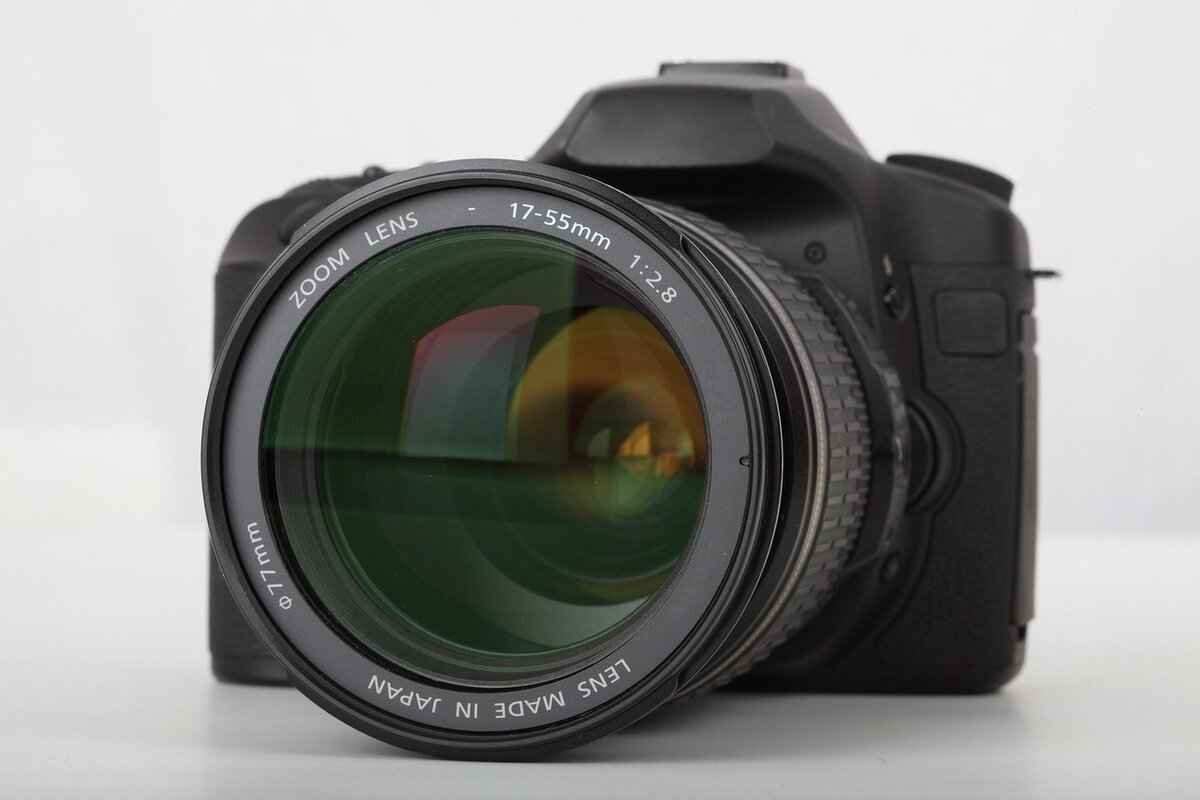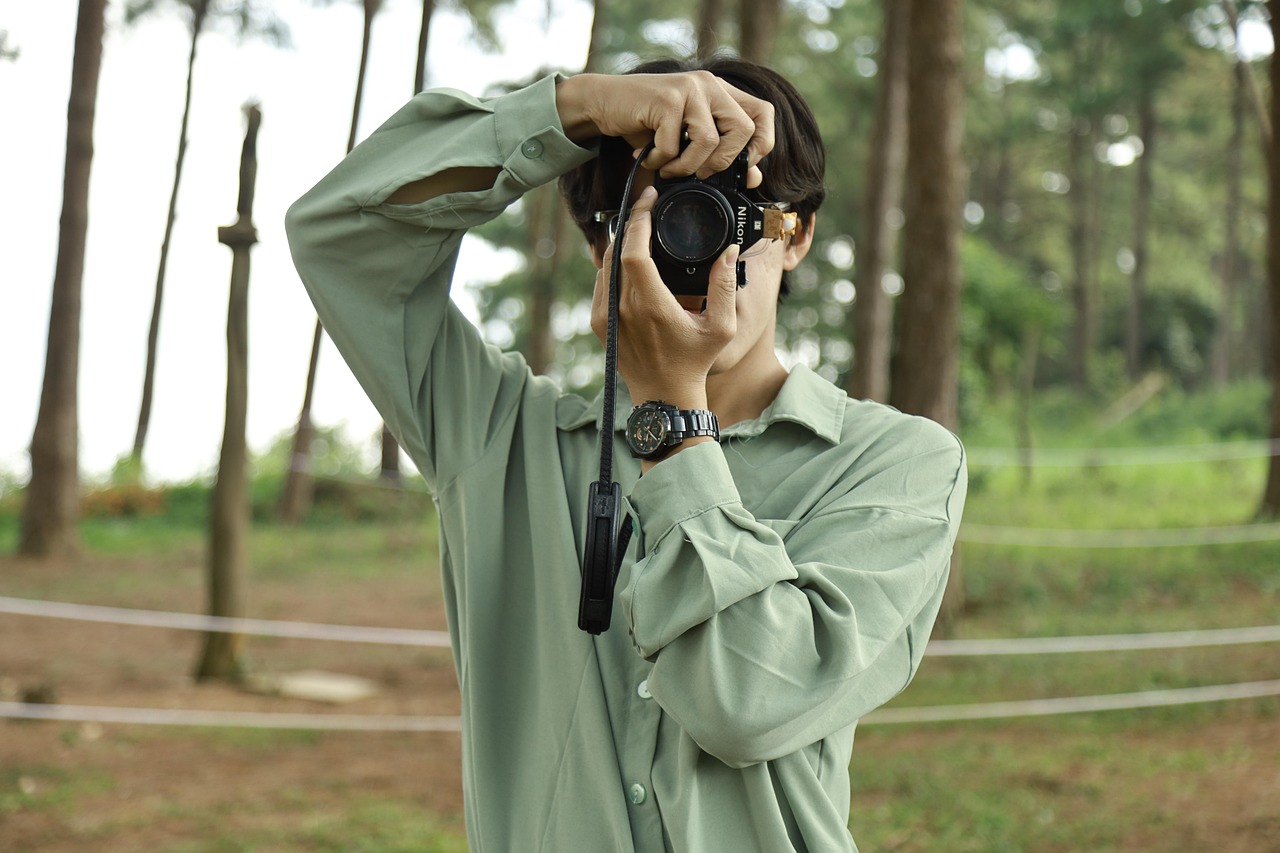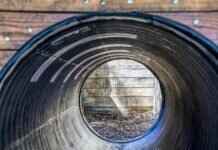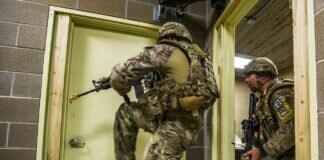In this article, we explore the top action cameras that excel in slow-motion video recording, focusing on models that offer 120FPS and 240FPS capabilities for stunning visual effects. Slow-motion video has become increasingly popular among content creators, athletes, and filmmakers, as it allows for an in-depth examination of fast-paced movements. By capturing these moments in exquisite detail, viewers can appreciate the beauty and intricacies of action that might otherwise go unnoticed.
Slow motion video captures fast-moving subjects in a way that enhances the viewer’s experience. This technique is particularly popular in sports, wildlife documentaries, and creative filmmaking. By slowing down the action, filmmakers can highlight specific moments, adding drama and excitement to their narratives.
When selecting an action camera for slow-motion video, it’s crucial to understand the essential features that contribute to high-quality footage. Here are the key aspects to consider:
- Frame Rate: Higher frame rates allow for smoother slow-motion playback.
- Resolution: Higher resolutions, such as 4K, provide clarity and detail.
- Stabilization Technology: Effective stabilization minimizes shakiness, ensuring smooth playback.
Several action cameras are optimized for 120FPS slow-motion recording. Here are some of the best options:
-
The GoPro HERO10 Black is renowned for its superior slow-motion capabilities, offering 120FPS at 4K resolution. Its advanced stabilization features enhance video quality, making it a favorite among enthusiasts.
-
The DJI Osmo Action delivers impressive slow-motion performance with 120FPS at 1080p. Its dual screens and robust build make it a versatile choice for various shooting conditions.
For those seeking even higher frame rates, several action cameras excel at 240FPS slow-motion recording:
-
The Insta360 ONE R offers an innovative modular design and can shoot at 240FPS in 1080p, making it a unique choice for capturing dynamic scenes with incredible detail.
-
The GoPro HERO9 Black supports 240FPS at 1080p, providing excellent slow-motion quality. Its user-friendly interface and robust features make it an ideal option for both amateurs and professionals.
Understanding how different brands stack up in slow-motion capabilities can help you make an informed decision. Here we compare key models from popular manufacturers:
-
Both GoPro and DJI offer excellent slow-motion features, but their strengths vary. GoPro tends to excel in stabilization, while DJI provides unique features like dual screens.
-
Insta360’s modular design allows for creative filming options, making it a standout choice for those interested in innovative slow-motion techniques and versatile shooting styles.
To maximize the effectiveness of your slow-motion videos, consider these practical tips:
-
Good lighting is essential for capturing high-quality slow-motion footage. Proper illumination ensures clarity and reduces noise in your videos, enhancing the final product.
-
Choosing the right subjects for slow-motion footage can significantly impact the visual appeal. Fast-moving subjects, such as athletes or wildlife, often yield the best results.

What is Slow Motion Video and Why is it Popular?
Slow motion video is a captivating technique that allows viewers to experience fast-moving subjects in stunning detail. By capturing footage at a higher frame rate and playing it back at a normal speed, this technique creates a mesmerizing effect that highlights every nuance of motion. Whether it’s the graceful arc of a diver entering the water or the explosive energy of a sports event, slow motion brings out the beauty and intricacies that are often missed in real-time.
Why is Slow Motion Video So Popular?
- Enhanced Visual Experience: Slow motion provides a unique way to appreciate the dynamics of movement, making it a favorite among filmmakers and content creators.
- Artistic Expression: It allows for creative storytelling, enabling artists to emphasize emotions and dramatic moments in their work.
- Engagement: Audiences are drawn to the striking visuals and the ability to see fast actions unfold in a more digestible format.
- Versatility: From sports highlights to cinematic sequences, slow motion is applicable across various genres, making it a versatile tool.
Understanding the appeal of slow motion video is essential when selecting the right action camera for your needs. Different models offer varying capabilities, and knowing what to look for can significantly enhance your filming experience.
What Should You Consider When Choosing an Action Camera for Slow Motion?
- Frame Rate: Look for cameras that offer high frame rates, such as 120FPS or 240FPS, to achieve smooth playback.
- Resolution: Higher resolutions, like 4K, are crucial for capturing detailed slow-motion footage that maintains clarity.
- Stabilization: Effective stabilization technology is vital for reducing shakiness, ensuring a professional-looking final product.
As you delve into the world of slow motion video, keep in mind that the right equipment can make all the difference. Experimenting with different settings and techniques can lead to stunning results that captivate your audience. Whether you’re a budding filmmaker or an avid hobbyist, mastering slow motion can elevate your video content to new heights.
In conclusion, slow motion video is more than just a visual effect; it is a powerful tool that enhances storytelling and captures the beauty of movement. By understanding its popularity and the critical features to consider when selecting an action camera, you can unlock the full potential of this fascinating technique.

Key Features to Look for in Slow Motion Action Cameras
When it comes to capturing stunning visuals, slow-motion action cameras have become indispensable tools for enthusiasts and professionals alike. However, selecting the right camera requires a keen understanding of various features that contribute to high-quality footage. This article delves into the key features to consider when choosing a slow-motion action camera, ensuring you make an informed decision.
The frame rate is one of the most critical factors in slow-motion video. It determines how many frames are captured per second, directly influencing the smoothness and detail of the playback. For instance, a camera that offers 120FPS will provide a significant slow-motion effect compared to standard 30FPS footage. Higher frame rates, such as 240FPS, allow for even more dramatic slow-motion effects, making fast action appear fluid and captivating.
Resolution plays a vital role in the clarity of your slow-motion videos. A camera that supports 4K resolution not only enhances the detail captured but also ensures that the slow-motion effect remains crisp and vibrant. As a result, when filming high-speed action, opting for a camera with higher resolution capabilities will yield better quality footage, allowing viewers to appreciate every moment.
Effective stabilization technology is crucial for producing smooth slow-motion videos. Without it, even the slightest shake can result in jarring footage. Look for cameras equipped with advanced stabilization features, such as electronic image stabilization (EIS) or gimbal systems, that can help minimize unwanted movement. This ensures that your slow-motion shots are not only beautiful but also professional-looking.
Filming in low light conditions can be challenging, especially for slow-motion videos. A camera with excellent low light performance will produce clearer images with less noise, even when shooting at higher frame rates. Look for cameras that excel in low light, as they will allow you to capture stunning slow-motion footage during dawn, dusk, or indoor settings without compromising quality.
While slow-motion videos are primarily visual, audio quality should not be overlooked. Some action cameras offer the ability to capture high-quality audio alongside your footage, which can enhance the overall experience. Consider whether the camera allows for external microphones or has built-in features to improve sound capture, especially if you plan to include dialogue or ambient sounds in your videos.
When filming action sequences, having a camera with a long-lasting battery life is essential. High frame rates can drain batteries quickly, so look for models that provide extended shooting times. Some cameras even offer the option to replace batteries mid-shoot, ensuring you don’t miss any crucial moments. Always check the specifications regarding battery capacity and performance to avoid interruptions during your filming sessions.
As action cameras are often used in extreme conditions, durability is a key feature to consider. Look for cameras that are waterproof, shockproof, and dustproof, ensuring they can withstand various environments. A rugged design will not only protect your investment but also allow you to capture footage in diverse settings without worry.
In summary, understanding these key features—frame rate, resolution, stabilization technology, low light performance, audio quality, battery life, and durability—will empower you to select the best action camera for your slow-motion video needs. By considering these factors, you can ensure that your choice aligns with your creative vision and filming requirements.
Frame Rate: Why is it Crucial?
When it comes to capturing stunning slow-motion videos, understanding the frame rate is absolutely crucial. The frame rate, measured in frames per second (FPS), dictates how many individual frames are captured in one second of video. This measurement significantly influences the smoothness and quality of the final footage.
In simple terms, a higher frame rate allows for more frames to be recorded, which translates to more detail and smoother motion when played back. For instance, while standard video typically runs at 30FPS, slow-motion videos often utilize frame rates of 120FPS or even 240FPS. This increase in frame rate allows for the capture of rapid movements—such as a sprinter’s foot striking the ground or a water balloon bursting—with remarkable clarity.
So, why is frame rate so important in slow-motion video? Here are several key reasons:
- Smooth Playback: Higher frame rates result in smoother playback, making the footage appear more natural and visually appealing. This is particularly important in action sequences where every detail matters.
- Enhanced Detail: The more frames captured, the more intricate details are visible. This is essential for analyzing fast movements or creating dramatic effects in sports, nature, or artistic videos.
- Creative Flexibility: Filmmakers and content creators can manipulate slow-motion effects more effectively when they have higher frame rates at their disposal. This opens up a world of creative possibilities, allowing for dynamic storytelling.
When selecting an action camera, it is vital to consider the frame rates it supports. Cameras that offer 120FPS or 240FPS capabilities are particularly desirable for those interested in producing high-quality slow-motion footage. However, it is not just about the frame rate; other factors, such as resolution and stabilization technology, also play significant roles in the overall quality of the video.
For example, a camera that shoots at 240FPS but at a low resolution may not provide the desired clarity and detail. Therefore, it is essential to find a balance between frame rate and resolution. In addition, effective stabilization technology can help eliminate shakiness, ensuring that your slow-motion footage remains smooth and enjoyable to watch.
In conclusion, understanding the importance of frame rate in slow-motion video is essential for anyone looking to create captivating content. By focusing on higher frame rates, you can achieve stunning visuals that enhance the viewer’s experience and bring your creative vision to life.
Resolution: How Does it Impact Quality?
When it comes to recording slow-motion videos, the resolution of your footage plays a critical role in determining the overall clarity and detail of the images captured. Higher resolutions, such as 4K and beyond, are particularly well-suited for this purpose, as they provide an impressive level of detail that enhances the viewing experience.
To understand the impact of resolution on slow-motion video quality, it is essential to consider how resolution is defined. Resolution refers to the number of pixels in each dimension that can be displayed, typically represented as width x height (e.g., 1920×1080 for Full HD). The higher the number of pixels, the more information is captured in each frame, resulting in a clearer and more detailed image.
When shooting slow-motion footage, the camera captures more frames per second (FPS) than regular video. This means that each frame must contain a significant amount of detail to maintain quality during playback. For instance, while 1080p resolution can produce decent slow-motion videos, switching to a higher resolution like 4K allows for a much richer viewing experience. The finer details, such as the texture of a surface or the expressions on a subject’s face, become more pronounced, making the video visually captivating.
Moreover, higher resolutions help in post-production processes. When editing slow-motion footage, having a higher resolution gives you more flexibility to crop or zoom in on specific areas without losing quality. This can be particularly beneficial when you want to focus on a fast-moving subject or highlight a specific action during the playback.
Another aspect to consider is the bitrate, which is the amount of data processed per second of video. A higher resolution often comes with a higher bitrate, meaning more data is captured, leading to better image quality. This is crucial for slow-motion videos, where each frame’s detail is essential for a smooth and visually appealing result.
However, it’s important to note that higher resolutions also demand more from your hardware. Devices may require more storage space and processing power to handle 4K or higher resolutions effectively. Therefore, when selecting an action camera for slow-motion video, ensure that your equipment and editing software can support higher resolutions.
In conclusion, the resolution of your video significantly impacts the quality of slow-motion footage. Higher resolutions like 4K not only enhance clarity and detail but also provide greater flexibility in post-production. When looking for the best action camera for slow-motion video, prioritize models that support high resolutions to ensure that your creative vision is fully realized.
Stabilization Technology: What Should You Know?
In the realm of action cameras, stabilization technology plays a pivotal role in ensuring smooth and professional-looking footage. As enthusiasts and professionals seek to capture fast-paced activities, understanding how different stabilization methods work can greatly influence your camera choice.
When recording high-energy activities such as sports or outdoor adventures, camera shake can detract from the viewing experience. Effective stabilization technology minimizes shakiness in videos, ensuring smooth playback even during rapid movements. This is crucial for maintaining viewer engagement and delivering a cinematic quality to your footage.
- Electronic Image Stabilization (EIS): This method uses algorithms to reduce shake by cropping the edges of the video frame. EIS is effective for most scenarios but may result in a slight loss of resolution.
- Optical Image Stabilization (OIS): OIS uses physical adjustments in the camera lens to counteract movement. This method is often found in higher-end models and provides superior stabilization without cropping.
- Gimbal Stabilization: A gimbal is a mechanical device that keeps the camera steady on multiple axes. This is the most effective method for achieving smooth footage, especially in dynamic environments.
The effectiveness of stabilization technology can significantly influence the overall quality of your videos. With advanced stabilization, you can achieve professional-grade footage that is free from distracting jitters. This is particularly important for content creators who wish to present their work in the best possible light.
When selecting an action camera, consider the type of stabilization it offers. Cameras equipped with EIS may be suitable for casual use, while those featuring OIS or gimbal stabilization are ideal for serious videographers. Additionally, look for models that allow you to toggle stabilization features on and off, providing flexibility based on your shooting conditions.
Several action cameras stand out for their exceptional stabilization capabilities:
- GoPro HERO10 Black: Known for its HyperSmooth technology, this camera offers advanced EIS that delivers remarkably smooth footage, even in challenging conditions.
- DJI Osmo Action: With RockSteady stabilization, this camera effectively counters shake, making it a great choice for high-speed activities.
- Insta360 ONE R: Featuring FlowState stabilization, this camera provides seamless stabilization regardless of the shooting angle or movement.
To get the most out of your camera’s stabilization features, consider the following tips:
- Use a Stable Grip: Even with advanced stabilization, a stable grip can enhance performance. Use both hands when filming to minimize additional shake.
- Maintain a Steady Pace: When moving, try to keep a consistent speed and direction to help the stabilization technology work more effectively.
- Test Different Settings: Experiment with various stabilization settings to find what works best for your specific shooting environment.
Understanding stabilization technology is essential for anyone looking to produce high-quality action footage. By choosing the right camera and employing effective shooting techniques, you can capture stunning videos that truly showcase the excitement of your adventures.

Top Action Cameras for 120FPS Slow Motion Video
In the world of videography, slow motion has become a captivating technique that allows viewers to relish every detail of fast-moving subjects. For action enthusiasts, having the right camera to capture these moments in stunning clarity is essential. This article delves into the top action cameras that excel in 120FPS slow-motion recording, providing a blend of performance and quality that can elevate your video content.
Action cameras are designed to handle high-speed scenarios, making them perfect for capturing slow-motion footage. Their compact size, durability, and advanced features allow for versatile shooting options, whether you’re recording sports, nature, or daily adventures. With the ability to shoot at 120FPS, these cameras can transform ordinary moments into extraordinary visuals.
- Frame Rate: A higher frame rate, such as 120FPS, provides smoother slow-motion playback, allowing for detailed analysis of movement.
- Resolution: Look for cameras that support high resolutions like 4K or 1080p to ensure your slow-motion footage retains clarity.
- Stabilization: Effective stabilization technology is crucial for minimizing shaky footage, particularly in dynamic shooting environments.
Several action cameras stand out in the realm of 120FPS slow-motion recording. Here are the top contenders to consider:
The GoPro HERO10 Black is a leading choice among action cameras, renowned for its exceptional slow-motion capabilities. It offers 120FPS at 4K resolution, ensuring that your footage is not only smooth but also rich in detail. With advanced stabilization features like HyperSmooth, this camera significantly reduces the impact of shakes and jitters, making it a favorite among adventure seekers.
The DJI Osmo Action is another excellent option, providing 120FPS recording at 1080p. Its dual screens allow for easy framing of shots, while its robust build ensures durability in various conditions. The camera’s RockSteady stabilization technology further enhances video quality, making it a versatile choice for both casual users and professionals.
For those looking for a unique approach, the Insta360 ONE R offers a modular design that allows for creative filming options. It supports 120FPS at 1080p, making it ideal for capturing dynamic scenes. The ability to switch lenses and configurations adds versatility, enabling users to experiment with different shooting styles.
The GoPro HERO9 Black is another solid contender, supporting 120FPS at 1080p. This camera combines user-friendly features with high-quality performance, making it suitable for both amateurs and professionals. Its TimeWarp feature allows for creative time-lapse effects, further expanding your filming possibilities.
When selecting an action camera for slow-motion video, it’s essential to understand how different brands measure up. GoPro is often praised for its stabilization technology, which excels in challenging environments, while DJI offers unique features that enhance usability, such as dual screens. Insta360 stands out with its innovative design, catering to users who seek flexibility in their shooting approach.
- Lighting: Adequate lighting is crucial for high-quality slow-motion footage. Ensure your subjects are well-lit to reduce noise and enhance clarity.
- Subject Selection: Fast-moving subjects, like athletes or wildlife, yield the best results in slow-motion videos. Choose subjects that exhibit dynamic movement for maximum impact.
- Experiment with Angles: Varying your shooting angles can create more engaging slow-motion sequences. Don’t hesitate to try different perspectives to capture the action uniquely.
GoPro HERO10 Black
The stands out in the realm of action cameras, particularly for its exceptional slow-motion capabilities. With the ability to shoot at 120 frames per second (FPS) in stunning 4K resolution, this camera is a top choice for both amateur and professional videographers. Its advanced features and user-friendly design make it an ideal companion for capturing fast-paced action, whether you’re skiing down a mountain or filming a high-speed chase.
One of the key highlights of the HERO10 Black is its groundbreaking HyperSmooth 4.0 stabilization technology. This feature ensures that your footage remains incredibly smooth, even in the most chaotic environments. The camera’s ability to adjust stabilization based on the intensity of movement allows for seamless playback, making your slow-motion videos look polished and professional.
In addition to its slow-motion prowess, the HERO10 Black offers a range of shooting modes, including time-lapse and night mode, enhancing its versatility. The intuitive touchscreen interface simplifies navigation, allowing users to quickly switch between settings and modes. This ease of use is particularly beneficial when you’re in the midst of an action-packed scenario and need to adjust settings on the fly.
Another impressive aspect of the HERO10 Black is its improved low-light performance. The camera’s ability to capture clear images in dimly lit conditions makes it suitable for a variety of shooting environments. Whether you’re filming a sunset or an evening event, the HERO10 Black ensures that your footage retains its quality, even in challenging lighting situations.
For those interested in connectivity, the HERO10 Black features built-in Wi-Fi and Bluetooth, allowing for easy sharing and editing of videos directly from your smartphone or tablet. This seamless integration with mobile devices enhances the overall user experience, enabling quick uploads to social media platforms or editing apps.
When comparing the HERO10 Black to its predecessors, such as the HERO9 Black, the advancements in processing power and image quality are evident. The HERO10 Black is equipped with the GP2 processor, which significantly enhances performance, offering faster frame rates and improved image stabilization. This makes it a worthy upgrade for those looking to elevate their videography.
In terms of durability, the GoPro HERO10 Black is built to withstand the rigors of any adventure. With a waterproof design up to 33 feet (10 meters) without additional housing, it is perfect for underwater filming or capturing action in wet environments. Its rugged construction ensures it can handle drops and bumps, making it a reliable choice for extreme sports enthusiasts.
To maximize the potential of your HERO10 Black, consider these practical tips:
- Use adequate lighting: Ensure you have enough light to enhance the quality of your slow-motion videos.
- Stabilize your shots: While the HERO10 Black offers excellent stabilization, using a tripod or gimbal can further improve your footage.
- Experiment with angles: Try different perspectives to add creativity to your slow-motion shots.
In summary, the is a powerhouse in the action camera market, particularly for those passionate about slow-motion videography. Its combination of advanced features, ease of use, and durability makes it a top contender for anyone looking to capture their adventures in stunning detail.
DJI Osmo Action
The is a remarkable action camera that has gained a reputation for its outstanding performance in slow-motion video recording. With the ability to shoot at 120FPS at 1080p, it captures fast-moving moments with stunning clarity and detail. This feature is particularly appealing to adventure enthusiasts and content creators looking to add dramatic effects to their videos.
One of the standout features of the is its dual-screen design. This innovation allows users to easily frame their shots and monitor themselves while filming, making it ideal for vlogs and self-recorded content. The front screen is especially useful for capturing engaging selfies or ensuring that the subject is perfectly positioned within the frame.
The camera’s build quality is another significant advantage. Built to withstand harsh environments, the is waterproof up to 11 meters without the need for an additional housing. This durability means that you can take it on your adventures, whether you’re surfing, skiing, or hiking, without worrying about damaging the device.
In terms of video quality, the Osmo Action excels not only in slow motion but also in standard recording modes. It supports 4K video recording at 60FPS, ensuring that you can capture high-resolution footage when slow motion is not required. The camera also features advanced stabilization technology, known as RockSteady, which minimizes shakes and jitters, resulting in smooth and professional-looking videos even during intense activities.
For those interested in editing their videos, the offers a variety of shooting modes, including time-lapse and hyper-lapse, providing creative flexibility. The ability to switch between these modes seamlessly enhances the storytelling aspect of your videos, making them more engaging and visually appealing.
When considering the for slow-motion video, it’s essential to note that the camera performs exceptionally well in various lighting conditions. However, optimal lighting can significantly enhance the quality of slow-motion footage. Bright, natural light helps to reduce noise and improve clarity, ensuring that your fast-action scenes are captured beautifully.
In conclusion, the is a versatile and robust action camera that stands out in the crowded market of action cameras. Its impressive slow-motion capabilities, dual-screen functionality, and durable design make it a top choice for anyone looking to create stunning video content. Whether you’re an amateur filmmaker or a seasoned professional, the Osmo Action provides the tools necessary to elevate your video production to new heights.

Best Action Cameras for 240FPS Slow Motion Video
When it comes to capturing breathtaking visuals, 240FPS slow-motion video is a game-changer. For enthusiasts and professionals alike, the ability to record at this frame rate opens up a world of creative possibilities. In this section, we will delve into some of the best action cameras that excel in 240FPS slow-motion recording, ensuring that you can immortalize your adventures in stunning detail.
240FPS allows for incredibly smooth slow-motion playback, making fast-moving subjects appear fluid and captivating. Whether you’re filming extreme sports, wildlife in action, or artistic shots, this frame rate provides clarity and detail that lower frame rates simply cannot match. The resulting footage can be used for everything from professional films to social media content, making it a versatile choice for creators.
- Insta360 ONE R: This modular action camera offers a unique design that allows users to switch between various lenses and shooting styles. With the ability to record at 240FPS in 1080p, it is perfect for capturing dynamic scenes. The 360-degree filming capability also adds an extra layer of creativity to your projects.
- GoPro HERO9 Black: Renowned for its durability and performance, the HERO9 Black supports 240FPS at 1080p. Its intuitive interface and advanced stabilization features make it ideal for both amateurs and seasoned filmmakers. The camera’s ability to withstand tough conditions ensures you can shoot in virtually any environment.
- DJI Osmo Action 3: This camera features dual screens and offers 240FPS recording at 1080p. Its robust build and excellent stabilization technology make it a reliable choice for capturing high-speed action. The camera also includes various shooting modes, enhancing its versatility.
Each of these cameras brings unique features to the table. For instance, the Insta360 ONE R stands out with its modular design, allowing users to customize their setup based on shooting needs. Meanwhile, the GoPro HERO9 Black is favored for its user-friendly interface and exceptional stabilization, making it easier to achieve smooth footage even in challenging conditions.
When evaluating these cameras, it’s essential to consider factors such as video quality, stabilization, and ease of use. The GoPro series is often praised for its superior stabilization technology, which minimizes shakiness and allows for professional-quality results. On the other hand, the DJI Osmo Action 3 provides excellent color accuracy and dynamic range, making it a strong contender for those focused on visual aesthetics.
- Lighting Conditions: Ensure you have adequate lighting to capture clear and detailed slow-motion footage. Natural light works best, but additional lighting may be necessary in low-light conditions.
- Subject Movement: Choose subjects that exhibit rapid movement for the best results. High-speed sports, wildlife, and action sequences often yield the most visually captivating slow-motion footage.
- Stabilization Techniques: Utilize gimbals or stabilizers to further enhance the smoothness of your footage, especially when filming handheld.
In summary, selecting the right action camera for 240FPS slow-motion video can significantly elevate your filming experience. With options like the Insta360 ONE R, GoPro HERO9 Black, and DJI Osmo Action 3, you have the tools necessary to capture stunning visuals that leave a lasting impression.
Insta360 ONE R
The is not just another action camera; it represents a significant leap in technology with its modular design. This innovative approach allows users to swap out different camera modules depending on their shooting needs, providing unparalleled versatility. One of its standout features is the ability to shoot at 240FPS in 1080p, making it an exceptional tool for capturing fast-paced action with stunning clarity and detail.
When it comes to slow-motion video, the frame rate is crucial. The Insta360 ONE R excels in this area, allowing filmmakers to capture moments that the naked eye might miss. Whether you’re filming extreme sports, wildlife, or dynamic dance performances, the ability to shoot at 240 frames per second ensures that every detail is preserved. This high frame rate enables smooth playback and allows for creative editing possibilities, such as dramatic slow-motion effects.
- Modular Design: The ability to change lenses and modules means you can adapt to various shooting conditions, whether it’s a wide-angle shot or a 360-degree view.
- High Resolution: Alongside its impressive frame rate, the camera supports 4K video resolution, ensuring that your slow-motion footage remains crisp and detailed.
- Advanced Stabilization: The ONE R incorporates FlowState stabilization, which significantly reduces shakiness, providing smooth and professional-looking videos even in the most active scenarios.
- Easy Editing: The Insta360 app offers user-friendly editing tools that allow you to create stunning slow-motion videos effortlessly.
While many action cameras offer slow-motion capabilities, the Insta360 ONE R stands out due to its unique modular design and high frame rate options. For instance, the GoPro HERO9 Black also offers 240FPS but lacks the modular flexibility that the ONE R provides. This feature makes the Insta360 ONE R particularly appealing for those who want to experiment with different filming styles without investing in multiple cameras.
The versatility of the Insta360 ONE R makes it suitable for various applications:
- Sports: Capture athletes in motion, allowing viewers to appreciate the intricacies of their movements.
- Nature: Film wildlife in their natural habitat, revealing behaviors that are typically too fast to observe.
- Creative Projects: Use slow motion to enhance storytelling in short films or music videos, adding dramatic flair to key moments.
To get the most out of your slow-motion videos with the Insta360 ONE R, consider the following tips:
- Lighting: Ensure you have adequate lighting, as slow-motion footage can appear grainy in low light conditions.
- Stability: Use a tripod or gimbal to further enhance stability, especially when shooting at high frame rates.
- Subject Selection: Choose subjects that exhibit rapid motion for the most visually engaging slow-motion results.
In summary, the is a remarkable action camera that offers innovative features and exceptional slow-motion capabilities. Its ability to shoot at 240FPS in 1080p makes it a top choice for creators looking to capture dynamic scenes with incredible detail and creativity.
GoPro HERO9 Black
The stands out as a remarkable action camera, particularly for those who are passionate about capturing slow-motion footage. With its capability to shoot at 240FPS in 1080p, it provides an extraordinary level of detail and clarity, making it perfect for both amateur filmmakers and professional videographers alike. This camera is designed to cater to a wide range of users, from adventure seekers to content creators.
When it comes to slow-motion video, the GoPro HERO9 Black offers several advantages:
- High Frame Rate: The ability to record at 240FPS allows for smooth playback of fast-moving subjects, providing a cinematic quality that is hard to match.
- User-Friendly Interface: Its intuitive controls make it easy for anyone to navigate through settings, ensuring that you can focus on capturing the moment rather than fiddling with the camera.
- Robust Features: With features like HyperSmooth stabilization, the HERO9 Black minimizes shakiness, resulting in fluid and professional-looking slow-motion footage.
Slow motion is not just about capturing action; it’s about enhancing storytelling. The HERO9 Black’s ability to shoot at 240FPS allows users to slow down their footage significantly, revealing intricate details that the naked eye might miss. Whether you’re filming sports, wildlife, or artistic performances, this camera excels at bringing out the beauty in motion.
The HERO9 Black comes equipped with a range of technical specifications that enhance its slow-motion capabilities:
| Feature | Details |
|---|---|
| Video Resolution | 1080p at 240FPS |
| Stabilization | HyperSmooth 3.0 |
| Battery Life | Up to 2.5 hours |
| Waterproof Rating | Up to 33 feet (10m) |
To maximize the potential of the HERO9 Black for slow-motion video, consider the following tips:
- Lighting: Ensure adequate lighting conditions. Good lighting improves the quality of slow-motion footage, reducing graininess and enhancing clarity.
- Frame Your Shots: Plan your shots carefully. Fast-moving subjects should be framed well to capture their motion effectively.
- Experiment with Angles: Different angles can dramatically change the impact of your slow-motion footage. Experiment to find the most captivating perspectives.
In conclusion, the is a versatile and powerful action camera that excels in slow-motion video recording. With its high frame rate, user-friendly interface, and robust features, it is an ideal choice for anyone looking to create stunning slow-motion footage.

Comparing Slow Motion Performance Across Brands
When it comes to capturing stunning slow-motion videos, understanding how different brands stack up in their slow-motion capabilities is crucial. This knowledge enables you to make an informed decision when selecting an action camera. In this section, we will compare key models from popular manufacturers, focusing on their performance, unique features, and overall value.
Both GoPro and DJI have established themselves as leaders in the action camera market, particularly when it comes to slow-motion video. But which brand truly excels?
- GoPro HERO10 Black: Known for its exceptional stabilization and ability to shoot at 120FPS in 4K, the HERO10 Black is a favorite among action enthusiasts. Its HyperSmooth technology ensures that even the most intense activities are captured smoothly, making it ideal for sports and outdoor adventures.
- DJI Osmo Action: This camera also supports 120FPS but at 1080p resolution. Its dual-screen feature allows for easy framing and vlogging, making it a versatile choice. However, some users find its stabilization less effective compared to GoPro.
The Insta360 ONE R offers a modular design that provides flexibility in shooting styles. It can record at 240FPS in 1080p, making it a unique contender in the slow-motion arena. This camera is particularly appealing for those who appreciate creativity in their filming techniques.
- Modular Design: The ability to swap out lenses allows users to tailor their shooting experience, enhancing the versatility of the camera.
- Innovative Features: With options like 360-degree filming, the Insta360 ONE R stands out for users looking to create dynamic and engaging slow-motion content.
While GoPro, DJI, and Insta360 are prominent players, other brands also offer competitive slow-motion features:
- Sony: Known for its high-quality sensors, Sony’s action cameras provide excellent performance in low-light conditions, making them suitable for shooting slow-motion videos in various environments.
- Akaso: A budget-friendly option, Akaso cameras offer decent slow-motion capabilities at lower resolutions, making them a great starting point for beginners.
Determining the best value depends on your specific needs:
- If you prioritize stabilization and high resolution, the GoPro HERO10 Black is likely your best bet.
- For those who value versatility and creative options, the Insta360 ONE R is worth considering.
- If you’re on a budget, Akaso provides a solid entry point without breaking the bank.
In conclusion, comparing slow-motion performance across brands reveals distinct strengths and weaknesses. By understanding the capabilities of each manufacturer, you can make a more informed decision that aligns with your filming needs and preferences.
GoPro vs. DJI: Which is Better for Slow Motion?
When it comes to capturing stunning slow-motion videos, the choice of action camera can significantly affect the outcome. Among the top contenders in the market, GoPro and DJI stand out for their unique features and capabilities. Understanding the strengths and weaknesses of each brand can help you determine which is better suited for your slow-motion video needs.
The GoPro HERO10 Black is a flagship model known for its exceptional stabilization technology. This camera allows users to shoot at 120FPS in 4K resolution, ensuring that fast-moving subjects are captured with remarkable clarity and fluidity. The advanced HyperSmooth stabilization feature minimizes shakiness, resulting in smooth playback even in dynamic situations. This makes it an ideal choice for action sports enthusiasts who want to document their adventures without the distraction of jittery footage.
On the other hand, the DJI Osmo Action offers a unique set of features that cater to a different audience. With the ability to shoot at 120FPS in 1080p, it provides excellent slow-motion capabilities. However, what truly sets the Osmo Action apart is its dual-screen design, allowing users to frame shots easily, whether they are filming themselves or capturing the action. This feature is particularly beneficial for vloggers and content creators who need to ensure that they are in the frame while filming.
| Feature | GoPro HERO10 Black | DJI Osmo Action |
|---|---|---|
| Frame Rate | 120FPS at 4K | 120FPS at 1080p |
| Stabilization | HyperSmooth | RockSteady |
| Dual Screen | No | Yes |
| Water Resistance | Yes (up to 10m) | Yes (up to 11m) |
In summary, both GoPro and DJI provide excellent options for slow-motion video recording, but they cater to different user needs. If your primary focus is on stabilization and high-resolution footage, GoPro is likely the better choice. However, if you value innovative features like dual screens and a user-friendly interface, DJI may be more appealing. Ultimately, the decision should be based on your specific filming requirements and personal preferences.
Whether you choose GoPro or DJI, both brands offer powerful tools for capturing breathtaking slow-motion videos. It’s essential to consider your shooting style, the environments you’ll be filming in, and the specific features that matter most to you. With the right action camera in hand, you can elevate your videography to new heights.
Insta360: A Unique Approach to Slow Motion
The Insta360 ONE R has revolutionized the action camera market with its innovative modular design, setting a new standard for creative filming options. This unique feature allows users to customize their camera setup according to their shooting needs, making it a standout choice for both amateur and professional filmmakers.
When it comes to capturing stunning slow-motion footage, the Insta360 ONE R excels with its ability to shoot at 240FPS in 1080p. This capability enables users to capture fast-moving subjects in extraordinary detail, providing a cinematic quality that is hard to match. The modular design not only enhances flexibility but also encourages creativity, allowing users to experiment with different lenses and configurations.
- Customization: Users can easily swap out lenses, including a 360-degree lens and a wide-angle lens, to suit various filming scenarios.
- Portability: The lightweight design makes it easy to carry, ensuring that you can take it anywhere your adventures lead.
- Versatile Shooting Styles: Whether you’re filming extreme sports, nature, or everyday moments, the Insta360 ONE R adapts to your needs.
Insta360’s approach to slow motion is not just about frame rates; it also incorporates advanced stabilization technology. This feature minimizes shakiness, ensuring that your slow-motion videos remain smooth and professional-looking. The camera’s FlowState stabilization system is particularly effective, allowing users to capture high-speed action without the typical jitters associated with handheld filming.
The modular design of the Insta360 ONE R opens up a world of creative possibilities. For instance, users can easily switch to a 360-degree lens to capture immersive footage, which can then be edited into slow-motion sequences for a unique storytelling experience. This versatility makes it an ideal choice for content creators looking to push the boundaries of traditional filmmaking.
From sports enthusiasts capturing their latest tricks to filmmakers documenting wildlife in motion, the applications of the Insta360 ONE R are vast. The ability to shoot in slow motion allows users to highlight intricate details that would otherwise go unnoticed. For example, capturing a skateboarder mid-air or a bird in flight can create visually stunning content that engages viewers.
If you’re seeking a camera that combines innovative technology with creative flexibility, the Insta360 ONE R is worth considering. Its modular design and impressive slow-motion capabilities make it a top contender in the action camera market. Whether you’re a seasoned professional or just starting, this camera offers the tools needed to elevate your filming experience.

Practical Tips for Shooting Slow Motion Videos
When it comes to shooting slow-motion videos, maximizing effectiveness is key. With the right techniques and equipment, you can significantly enhance the quality of your footage. Below are some practical tips that can elevate your slow-motion video production.
Good lighting is essential for capturing high-quality slow-motion footage. Proper illumination not only ensures clarity but also helps reduce noise in your videos. Natural light is often the best choice, but if shooting indoors or in low-light conditions, consider using softbox lights or LED panels. Experimenting with different lighting setups can yield stunning results, so don’t hesitate to try various angles and intensities.
The frame rate at which you shoot plays a significant role in the quality of your slow-motion videos. For instance, capturing at 120FPS or 240FPS allows you to slow down action dramatically without losing fluidity. Ensure your camera settings are optimized for high frame rates, and remember that higher frame rates often require more light, so adjust your lighting accordingly.
Choosing the right subjects for your slow-motion footage can greatly impact its visual appeal. Fast-moving subjects, such as athletes, wildlife, or even everyday actions like pouring water or blowing bubbles, often yield the best results. Pay attention to the dynamics of the action and how it translates into slow motion; some subjects naturally create more visually captivating footage than others.
Effective stabilization is crucial for achieving smooth playback in slow-motion videos. Using a tripod or gimbal can help eliminate shakiness, especially during dynamic movements. If your camera has built-in stabilization features, make sure to enable them. Additionally, practicing your shooting technique can lead to more stable footage, so take the time to refine your skills.
Adjusting your camera settings is vital for optimal slow-motion results. Start by setting your camera to the highest frame rate available, and choose a resolution that balances quality and file size. Also, consider using a faster shutter speed to prevent motion blur, as this will help maintain clarity in your slow-motion sequences.
Editing plays a significant role in the final look of your slow-motion videos. Use editing software to fine-tune the speed, adjust colors, and add effects that complement the slow-motion aesthetic. Slow-motion footage can also benefit from music or sound effects that enhance the emotional impact of the visuals, so choose audio elements that resonate with the theme of your video.
Finally, don’t be afraid to experiment with different techniques and settings. Try varying your shooting angles, frame rates, and even the speed at which you slow down your footage in post-production. Each experiment can lead to unique results, and you may discover techniques that work best for your style.
By following these practical tips, you can significantly enhance the quality and effectiveness of your slow-motion videos. With the right preparation and creativity, your footage can captivate audiences and convey powerful narratives.
Lighting: Why is it Important?
When it comes to capturing stunning slow-motion videos, lighting plays a pivotal role. The quality of illumination can significantly affect the clarity and overall aesthetic of your footage. In this section, we will delve into the importance of good lighting and how it can elevate your slow-motion video projects.
Good lighting is essential for capturing high-quality slow-motion footage. Proper illumination not only ensures clarity but also helps reduce noise in your videos, which can be particularly distracting. When filming at high frame rates, such as 120FPS or 240FPS, your camera requires more light to achieve the best results. Without adequate lighting, you may end up with grainy or poorly defined images, which detracts from the overall impact of your video.
Here are some key reasons why lighting is crucial for slow-motion video:
- Enhances Detail: Proper lighting brings out the intricate details of fast-moving subjects. Whether you are filming a sprinter in motion or a bird in flight, good lighting will highlight the textures and movements that make your footage captivating.
- Reduces Motion Blur: In slow-motion footage, any motion blur can be amplified. Adequate lighting allows for faster shutter speeds, which minimizes blur and ensures that each frame is crisp and clear.
- Improves Color Accuracy: Lighting affects color reproduction. Using the right lighting setup can enhance the vibrancy and accuracy of colors in your video, making it more visually appealing.
- Creates Mood and Atmosphere: Lighting can significantly influence the mood of your video. Soft, diffused lighting can create a dreamy effect, while harsh lighting can evoke tension or excitement, depending on the scene you are capturing.
To achieve optimal lighting for your slow-motion videos, consider the following tips:
- Natural Light: Whenever possible, utilize natural light. Shooting during the golden hour—shortly after sunrise or before sunset—can provide beautiful, soft lighting that enhances your footage.
- Use Reflectors: Reflectors can help bounce light onto your subject, filling in shadows and creating a more balanced exposure.
- Softboxes and Diffusers: If shooting indoors or in controlled environments, using softboxes or diffusers can help create even lighting, reducing harsh shadows.
- Experiment with Angles: The angle of your lighting can drastically change the look of your video. Experimenting with different angles can help you discover unique perspectives that enhance your slow-motion footage.
In conclusion, investing time and effort into your lighting setup can make all the difference in the quality of your slow-motion videos. Remember, the goal is to capture every detail and emotion, and good lighting is your best ally in achieving that.
Subject Selection: What Works Best?
When it comes to capturing stunning slow-motion footage, the selection of subjects plays a pivotal role in achieving visually captivating results. Choosing the right subjects for slow-motion video can significantly enhance the overall impact of your footage, allowing viewers to appreciate details that are often missed in real-time. In this section, we will explore what types of subjects work best for slow-motion video and offer tips to maximize your filming experience.
Fast-moving subjects, such as athletes, wildlife, and vehicles, tend to yield the most impressive slow-motion footage. The rapid motion allows for a dramatic transformation when slowed down, showcasing intricate movements and details that captivate audiences. For example:
- Athletes: The fluidity of a runner’s stride or the precision of a gymnast’s routine can be beautifully highlighted in slow motion, making the viewer feel as if they are witnessing the performance in a whole new light.
- Wildlife: Capturing the swift movements of animals, such as a bird in flight or a cheetah sprinting, can reveal the beauty of nature’s design and the power of these creatures.
- Vehicles: Fast cars or motorcycles in motion can create exhilarating visuals when slowed down, emphasizing speed and agility.
While fast-moving subjects are often the go-to choice for slow-motion footage, there are other factors to consider when selecting your subjects:
- Action and Movement: Look for subjects that exhibit dynamic movements. Dance performances, sports activities, and even everyday actions like pouring water can provide excellent opportunities for slow-motion capture.
- Contrast and Color: Subjects with vibrant colors or unique contrasts against their backgrounds can create visually striking footage. For example, a brightly colored kite flying against a blue sky adds an aesthetic appeal when captured in slow motion.
- Emotion and Expression: Capturing moments of emotion, such as a child’s laughter or an athlete’s determination, can resonate deeply with viewers. Slow motion amplifies these feelings, making them more impactful.
Don’t be afraid to experiment with various subjects and scenarios. Sometimes, the most unexpected subjects can yield the most breathtaking slow-motion footage. Consider trying:
- Everyday Activities: Simple actions, like a splash in water or a balloon popping, can create mesmerizing visuals when slowed down.
- Artistic Movements: Capture the intricacies of painting, dancing, or even cooking. These subjects can tell a story that resonates with viewers.
- Nature Elements: The movement of wind through trees, waves crashing on the shore, or the flight of insects can provide a unique perspective.
In conclusion, the subject you choose for your slow-motion footage can greatly influence the visual appeal and emotional resonance of your final product. By focusing on fast-moving subjects while also considering elements like color, emotion, and creativity, you can create captivating slow-motion videos that leave a lasting impression on your audience.
Frequently Asked Questions
- What frame rate should I look for in an action camera for slow motion?
When choosing an action camera for slow motion, look for models that offer at least 120FPS for smooth playback. If you want even more dramatic effects, consider cameras that support 240FPS.
- Does resolution matter for slow motion videos?
Absolutely! Higher resolutions like 4K not only provide better clarity but also enhance the overall quality of your slow motion footage. The more detail, the better the slow-motion effect will look!
- How important is stabilization technology in slow motion video?
Stabilization is crucial! It helps minimize shakiness and ensures your slow motion videos are smooth and enjoyable to watch. Look for cameras with advanced stabilization features for the best results.
- Can I shoot slow motion videos in low light conditions?
Shooting in low light can be challenging for slow motion videos. Good lighting is essential to capture clear, high-quality footage without noise. Try to film in well-lit environments for the best results!
- What types of subjects work best for slow motion footage?
Fast-moving subjects like athletes, wildlife, or even water splashes are ideal for slow motion. They create dynamic visuals that truly shine when slowed down!














